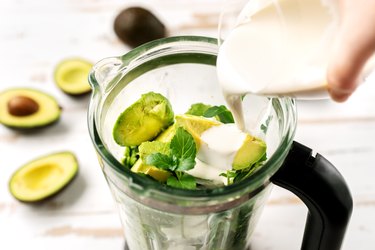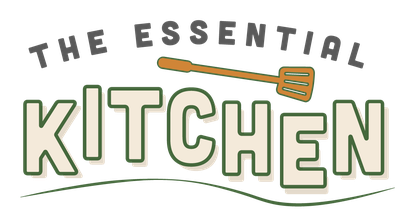
From berry-packed smoothies to spicy cold soups, there's no denying that a blender has rightfully earned its place on any kitchen counter, as it can mix, puree and emulsify foods in minutes.
And yes, blenders can be extra helpful in whipping up frozen cocktails and delicious smoothie bowls. However, this kitchen appliance also has remarkable nutritional benefits to boot, making it a win-win for your tastebuds and your wallet.
In fact, research shows that blending food into a soup can help increase satiety post-meal, according to a May 2012 study in The Journal of Nutrition.
Similarly, blended grapefruit juice had an advantage over grapefruit juice made in a juicer — the blended juice had significantly higher levels of beneficial phytonutrients compared to juiced grapefruit, a September 2012 study published in the Journal of Food Science found.
With this in mind, we tapped kitchen pros to break down all the ins and outs of this handy appliance, all the different ways you can use one and the best types for your needs and goals.
How Does a Blender Work and What Can You Use It For?
A blender works by using a high-powered motor and blunt spinning blade to help liquify food, chef and nutritionist Serena Poon, CN, explains. This allows the gadget to successfully crush and blend frozen foods.
Whether it's a portable blender you can tuck in your work bag or a countertop appliance you can use again and again, chef and cookbook author, Dennis Prescott, says that blenders at their core are basically liquidizers, as they can mix, puree and emulsify foods with ease.
Use a blender to:
- Make pureed baby foods
- Whip up smoothies
- Blend gazpacho and other cold (or hot) soups
- Crush ice
- Grind meat
- Blend sauces and marinades
- Chop veggies
Tip
You can chop veggies in a blender so long as your appliance has a chopping setting, Frances Largeman-Roth, RDN and author of Smoothies & Juices: Prevention Healing Kitchen, says.
"Some blenders have a chop or pulse function, which processes the ingredients just enough to break them down into small pieces without fully blending them," Largeman-Roth says. "If you’re trying to chop veggies in a blender, you need to have a blender with a setting that accommodates that. Don’t press the smoothie button thinking that you’re going to get chopped veggies."
"As far as I am concerned, blenders are absolutely an essential kitchen appliance," Prescott says.
"Whether it's crushed ice, smoothies or pureed soup, this appliance makes the whole cooking process a lot easier." Not to mention, it helps you eat healthier because it makes getting fruits and veggies into your daily meal plan that much easier.
Blender Recipes to Try
What's the Difference Between a Blender and a Food Processor?
On the surface, food processors and blenders appear so similar they're almost interchangeable, Prescott explains. However, in reality, both gadgets excel at different kitchen tasks such as liquidizing and chopping.
"Blenders have dull blades and are meant for liquid-based foods such as soups, purees and smoothies," he says. "On the other hand, food processors have razor-sharp blades and are perfect for pulverizing onions and garlic, making creamy pesto and breaking down hard ingredients like nuts and seeds."
Largeman-Roth suggests that blender containers and attachments also differ from their food processor counterparts, as blender containers tend to be taller and contain a single blade.
"Blender containers are generally tall and shaped like a pitcher or a cylinder, and they usually have a single blade that rotates quickly to pulverize the ingredients inside the blender," she says.
"A food processor, on the other hand, usually has interchangeable blades and discs. Some slice, while others shred, grind and puree. Also, some food processors have attachments that knead dough and do other jobs. The bowl of a food processor is usually round."
So, can you use a food processor as a blender?
Not exactly. Food processors are meant for dryer foods, while blenders are more suitable for liquid-based foods with higher water content.
"Although the functions of a blender and food processor can complement each other, they are not interchangeable," Poon says. "If you try to make a liquid-based recipe in a food processor, the liquid will likely spill out, making it a very messy endeavor."
Looking to Buy a Blender?
Check out this guide to The 7 Best Blenders for Every Budget, Household Size and Cooking Task.
